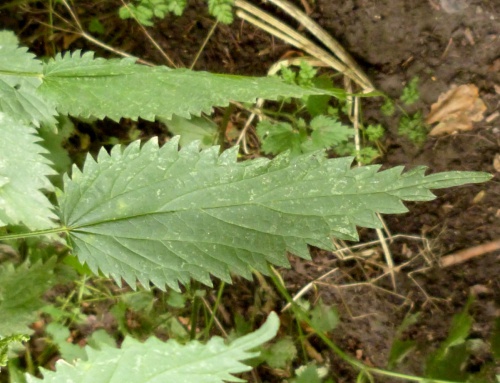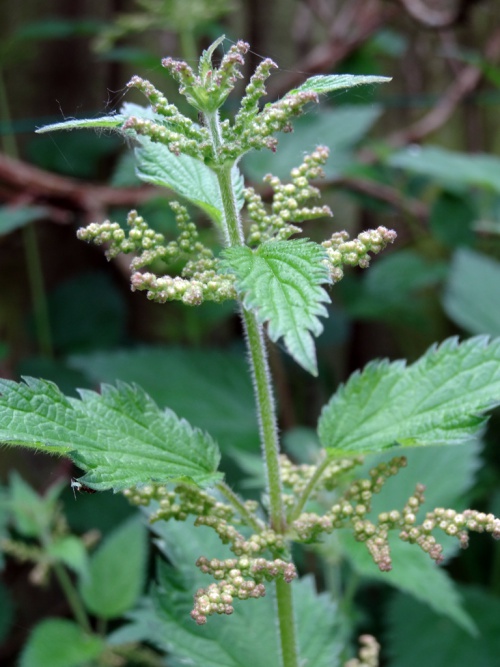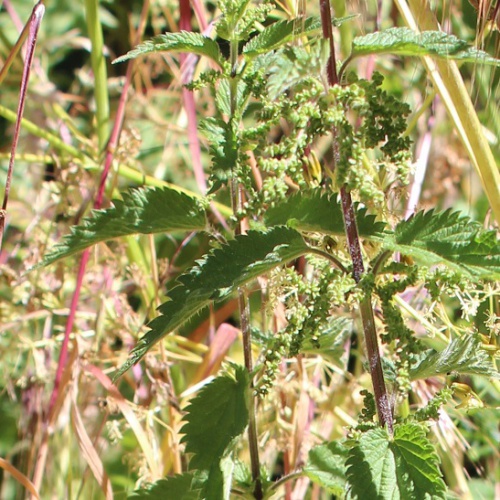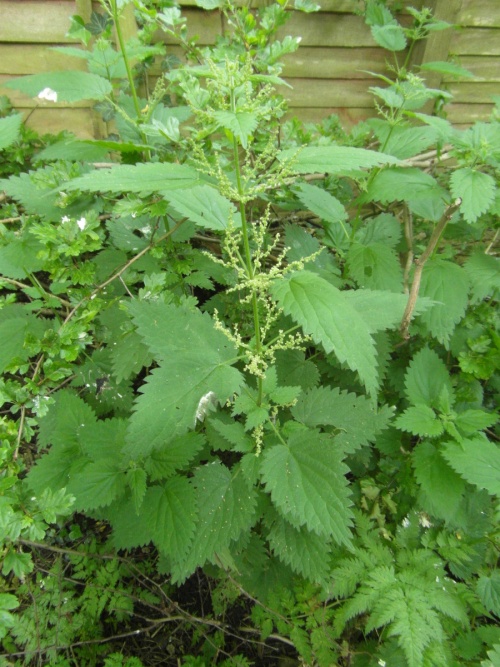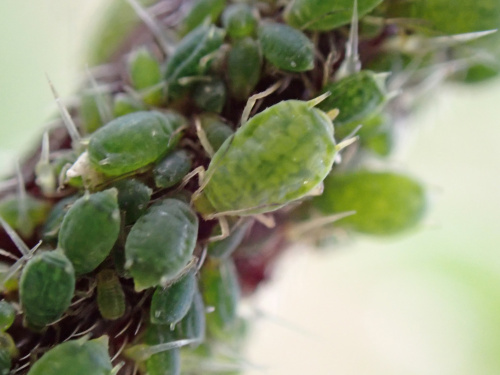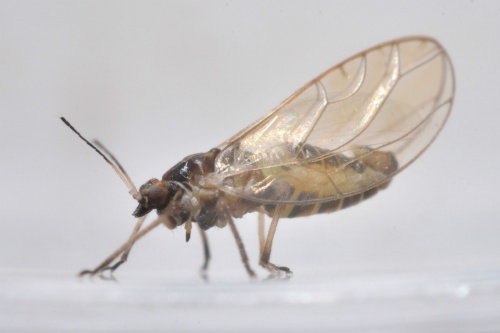Common Nettle - Urtica dioica
Medium to tall vigorous often patch forming plant, with stout stolons and square stems. Leaves opposite, heart shaped to lanceolate, toothed and armed with stinging hairs. Terminal leaf-tooth longer than the lateral ones. Male and female flowers, greenish on separate plants. Male in long drooping catkin like spikes, female in small clusters.
Almost anywhere.
Flowering June to September.
Perennial.
Abundant throughout Britain.
Abundant in Leicestershire and Rutland. In the 1979 Flora survey of Leicestershire it was found in 607 of the 617 tetrads.
Leicestershire & Rutland Map
Enter a town or village to see local records
MAP KEY:
Yellow squares = NBN records (all known data)
Coloured circles = NatureSpot records: 2025+ | 2020-2024 | pre-2020
UK Map
Species profile
- Common names
- Nettle, Stinging Nettle, Common Nettle
- Species group:
- Wildflowers
- Kingdom:
- Plantae
- Order:
- Rosales
- Family:
- Urticaceae
- Records on NatureSpot:
- 1281
- First record:
- 11/05/1992 (John Mousley;Steve Grover)
- Last record:
- 31/10/2025 (Smith, Peter)
Total records by month
% of records within its species group
10km squares with records
The latest images and records displayed below include those awaiting verification checks so we cannot guarantee that every identification is correct. Once accepted, the record displays a green tick.
In the Latest Records section, click on the header to sort A-Z, and again to sort Z-A. Use the header boxes to filter the list.
Latest images
Latest records
Aphis urticata
Aphis urticata is one of two aphid species associated with Common Nettle (Stinging Nettle). Early generations are dark bluish-green often mottled with a lighter green they have pale tapering siphunculi and a pale cauda - the adult apterae are 1.7 to 2.2 mm.
Nettle Aphid
The Nettle Aphid (Microlophium carnosum) is a very variable species with winged and unwinged forms that may be various colours, often green or pink. It is one of two aphid species associated with Common Nettle (Stinging Nettle).
Trioza urticae
The psyllid bug or jumping plant louseTrioza urticae is a reasonably distinctive species in a large and difficult genus. Distinguishing features include the relatively rounded (for Trioza) forewings with long outer vein, which together with its occurrence on nettles, make it reasonably easy to identify, although colouration is quite variable. The three main veins arise from a single point, which is the thing that distinguishes Triozidae. Early instar nymphs are pale, but the later stages have a distinctive black patterning. It causes galls on nettle; the young leaves are curled up and darker green, with the flat psyllids in a small depression beneath.





